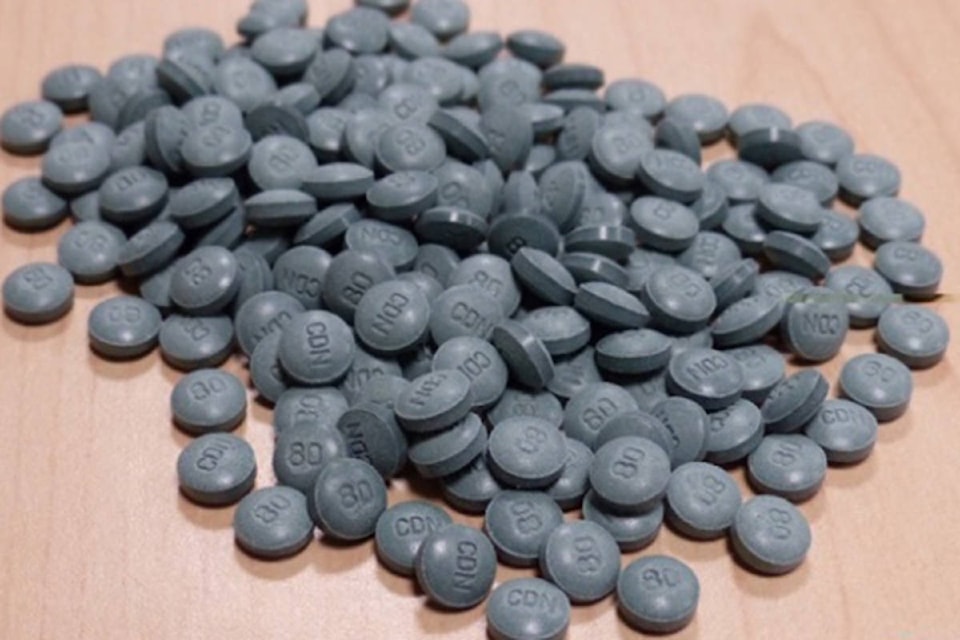Campbell River has not escaped the fentanyl crisis that has gripped the province and, in fact, has seen a higher rate of overdose deaths on average than the rest of the Island.
“Living in a smaller city or in a rural community is not protective against this overdose crisis,” said Dr. Charmaine Enns, Island Health’s chief medical health officer. “It impacts all of us.”
According to statistics compiled by Island Health, the Campbell River region has seen a death rate due to overdose of 62 per 100,000 between January and June of 2017, which is twice the rate on Vancouver Island (31 per 100,000) for the same time period.
Enns, who presented those numbers to city council at its Monday meeting, warned that while the numbers are alarming, they need to be put into perspective.
“This is a small population so the denominator is small, so a small change in the numerator makes the rate seem quite high,” Enns said. “But it is increasing, it’s not going down so I needed to present that, while the numbers are small – but not small enough – we do have a challenge in terms of the amount of overdose deaths and being able to reach the people that potentially are at risk of having an overdose.”
Enns said it’s been a struggle to connect with people in the community. Island Health, in partnership, opened an Overdose Prevention Site in Campbell River’s AIDS Vancouver Island office earlier this year but Enns said the uptake has been low.
“On average, it’s maybe two people a day that are accessing the site. Most of the use is by folks that have used it before,” Enns said. “There’s not a lot of first time users coming in. So the usage has been low and we’re being challenged on, ‘is this the best model for funding?’”
Enns said what those “absolute numbers” don’t show, though, is how crucial the service has been for those who used it.
“The percentage of users who have an overdose is 8.5 per cent,” Enns said. “In most of our Overdose Prevention Sites (across the Island), the overdose prevention rate is less than one per cent. So there is a very high overdose rate happening in this (Campbell River) location. So it is to me, a valuable service.”
Enns said Island Health has not had one single death at any of its Overdose Prevention Sites or Safe Consumption Sites on the Island. The sites are not only about observing the overdose and being able to respond to it but also to distribute harm reduction supplies and connect people to other services or supports.
Campbell River’s Overdose Prevention Site is operating under an emergency order from the province, which was prompted by the death of 978 people across B.C. last year due to illicit drugs. Enns said that number has been on the rise, with already 780 overdose deaths recorded from January to June of this year.
“What was awful in 2016 has only gotten worse in 2017,” Enns said. “It wouldn’t be unreasonable to expect that the rate we’re having this year will soon eclipse what we saw in 2016.”
Enns said that in 2017, the province is averaging about four deaths per day due to illicit drug overdose and on the Island the rate of illicit drug overdose deaths is higher than that of the rest of the province as a whole – a statistic that is tough to swallow for Enns.
“I just want to say, this is in the context of many people working very hard so it is of course a bit disheartening for many of us but it is the reality and we can’t grow fatigued of talking about it because there’s still lots of work to be done.”
A large part of that is trying to reach those who are dying. Enns said that 89 per cent of the deaths are occurring inside, whether that be in hotel rooms or private residences and of those, the majority are men (82 per cent) who are dying alone.
“They’re not accessing our services. We don’t know how to get to them and we’re really struggling,” said Enns who added the province is currently in the midst of a research project to try and identify that population so the message can get out to them and be framed in a way that will resonate and encourage them to seek medical services whether that be through prevention or attending a safe location staffed with medical personnel while consuming their drug of choice.
“We’re struggling,” Enns said. “But we’re trying.”
